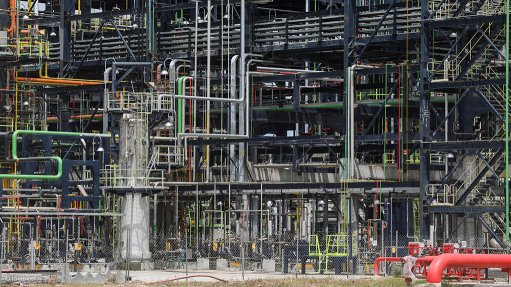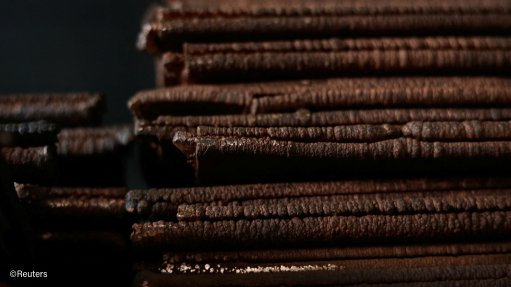Slave labour
Thomas Brassey and William Mackenzie built the greater part of the Paris and Rouen railway. They were British. Their firm got the job because the French contractors were too expensive.
Between 1841 and 1844, they built about 700 km of railway line in France. Very little of the work was done with machines. Apart from anything, the internal combustion engines had not been invented. All the work was done using manual labour.
Railway lines have to have fairly shallow gradients. Thus, the route of the railway line (called the track alignment) has to meander all over the show, taking the shallowest gradient. At some point, there is going to be a hill and through this hill has to go a cutting. In the absence of a backyard full of Caterpillar earthmoving equipment, this whole process has to done by labourers wielding picks and shovels. As the cutting gets deeper, the manual labourer (called a navvy) fills a wheelbarrow with rubble and attaches the front of the wheelbarrow to a horse at the top of the cutting. The horse pulls the wheelbarrow up to the cutting lip, while the navvy guides it from behind straddling the slope. Of course, if the horse slips or the rope breaks, then the navvy and the wheelbarrow hurtle backwards into the cutting and it is good night, sweet prince, for the navvy.
Nevertheless, the railways were built. The British were by no means the first to use manual labour to build anything. Naturally, the Romans come to mind and before them the Egyptians. Then there is the Great Wall of China. The big thing about all these constructions is that they were built using manual labour, which was almost 100% slaves.
With the invention of construction machinery, it became less labour intensive to build anything; stone blocks could be moved by cranes and the blocks could be sawn with steel saws. Concrete provides a very efficient means of construction.
Let us look back to the manual labour issue: the means of construction was contained in the mind of the slaves. There was, of course, an overseer, but he could not be everywhere and tell everybody what to do. Thus, each slave knew the general idea and quickly learned what to do.
However, as the construction machinery became readily available, one had to compress the knowledge that was in the mind of each slave into the minds of a few workers who issued instructions to the people operating the construction machinery. We will call these few workers, those who have the construction knowledge of, say, 1 000 slaves, ‘engineers’. If the engineers were left to get on with the job unharried by external influences, then the construction work would be done just as well as was done on the Great Wall of China et cetera and would last just as long.
However, not so. Now, 1 000 slaves minus one engineer and, say, 50 construction workers leaves 949 slaves who are unemployed. Their descend- ants become politicians, quality assurance inspectors, health and safety consultants, training consultants and so on – who are all employed part or full time in the contract with the purpose of giving their input (which the engineer is sure is not needed) and holding meetings and training sessions and so on so that, in point of fact, the construction work takes just as long as if done by manual labour but with the problem that it is not done as well.
In the manual labour contracts, such as the Egyptian pyramids, the Great Wall of China and the Roman aqueducts, if any slave worker did not do a proper job, then he would be entombed, thrown off the wall or buried in the foundations after he had been whipped to death. Since modern contracts have quality insurance inspectors, the construction workers have no shame about doing the job badly; if the quality insurance inspector catches them out, they just fix it. If not, the work just remains badly done. This is facetious, I know, but I ask you this: look at the stonework on the Cape Town Castle. Look at the stonework on the harbour breakwater in Cape Town. Do you think it could be done today, better?
Comments
Press Office
Announcements
What's On
Subscribe to improve your user experience...
Option 1 (equivalent of R125 a month):
Receive a weekly copy of Creamer Media's Engineering News & Mining Weekly magazine
(print copy for those in South Africa and e-magazine for those outside of South Africa)
Receive daily email newsletters
Access to full search results
Access archive of magazine back copies
Access to Projects in Progress
Access to ONE Research Report of your choice in PDF format
Option 2 (equivalent of R375 a month):
All benefits from Option 1
PLUS
Access to Creamer Media's Research Channel Africa for ALL Research Reports, in PDF format, on various industrial and mining sectors
including Electricity; Water; Energy Transition; Hydrogen; Roads, Rail and Ports; Coal; Gold; Platinum; Battery Metals; etc.
Already a subscriber?
Forgotten your password?
Receive weekly copy of Creamer Media's Engineering News & Mining Weekly magazine (print copy for those in South Africa and e-magazine for those outside of South Africa)
➕
Recieve daily email newsletters
➕
Access to full search results
➕
Access archive of magazine back copies
➕
Access to Projects in Progress
➕
Access to ONE Research Report of your choice in PDF format
RESEARCH CHANNEL AFRICA
R4500 (equivalent of R375 a month)
SUBSCRIBEAll benefits from Option 1
➕
Access to Creamer Media's Research Channel Africa for ALL Research Reports on various industrial and mining sectors, in PDF format, including on:
Electricity
➕
Water
➕
Energy Transition
➕
Hydrogen
➕
Roads, Rail and Ports
➕
Coal
➕
Gold
➕
Platinum
➕
Battery Metals
➕
etc.
Receive all benefits from Option 1 or Option 2 delivered to numerous people at your company
➕
Multiple User names and Passwords for simultaneous log-ins
➕
Intranet integration access to all in your organisation


















